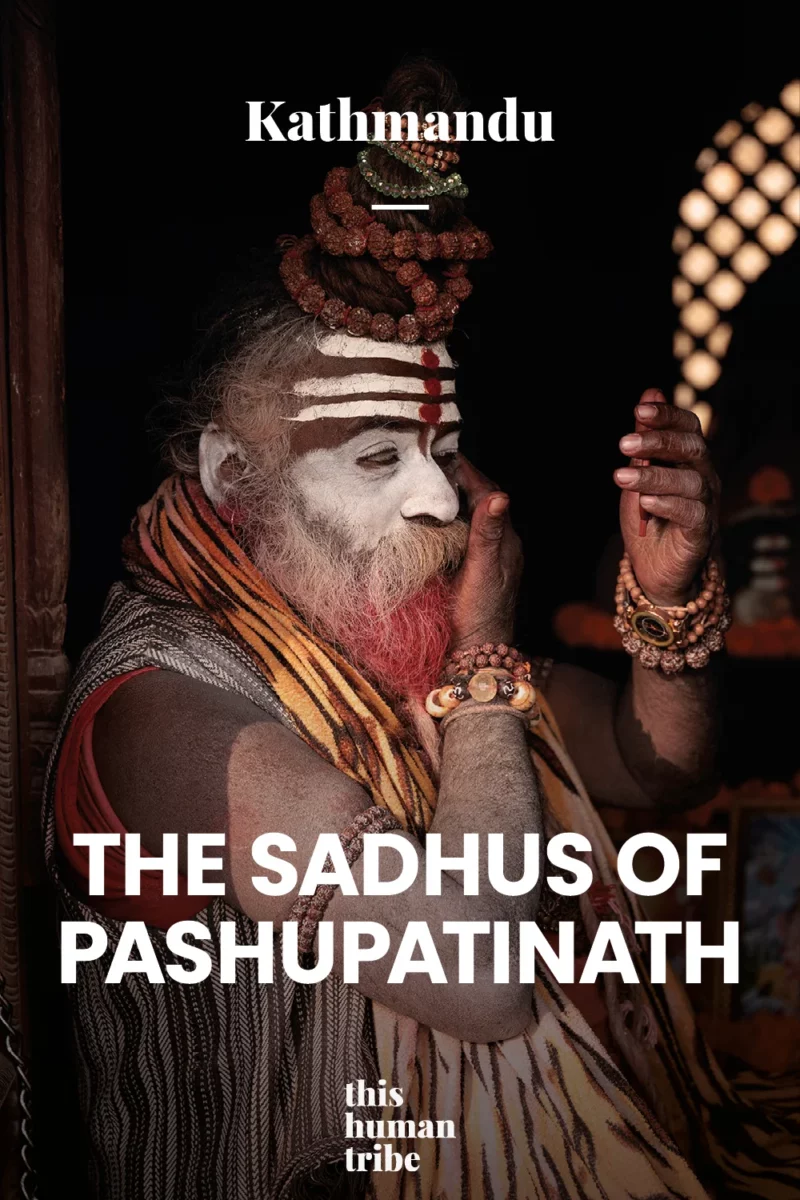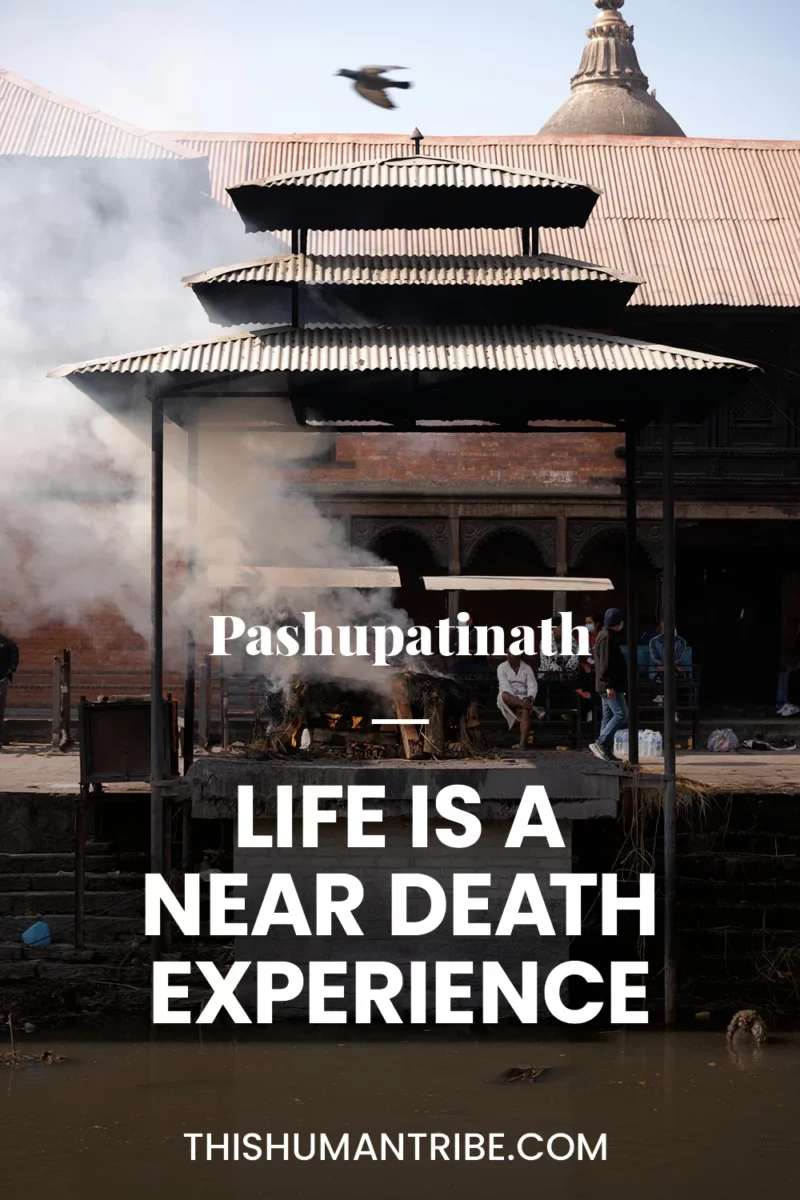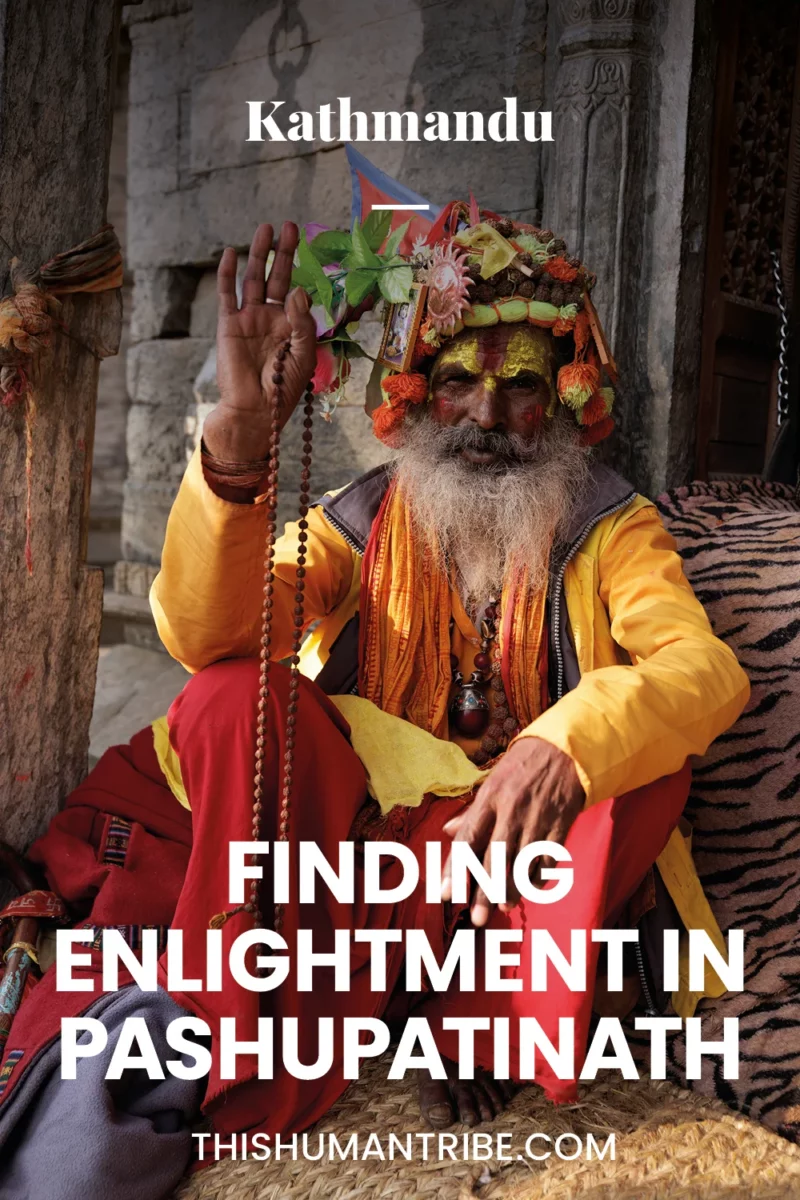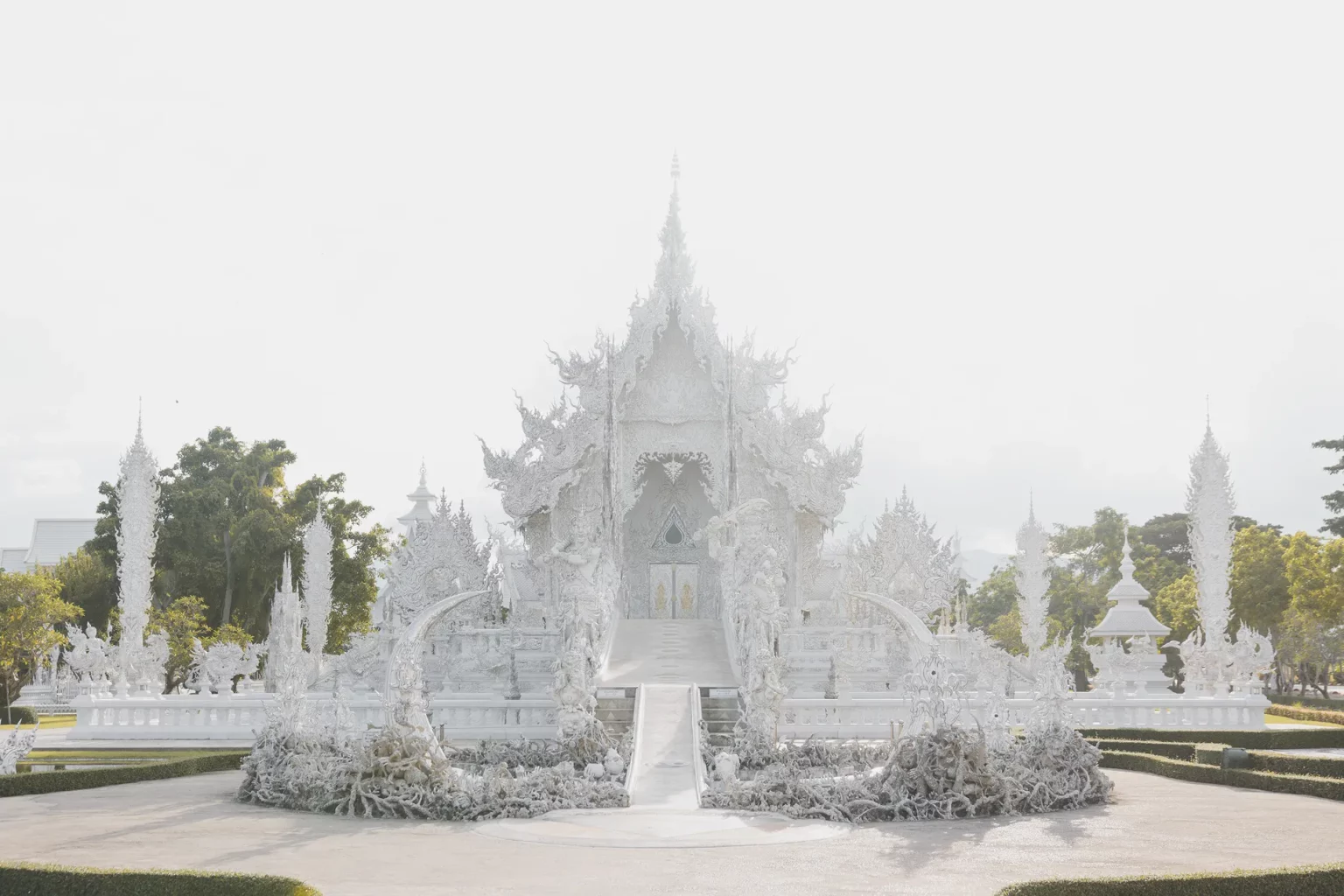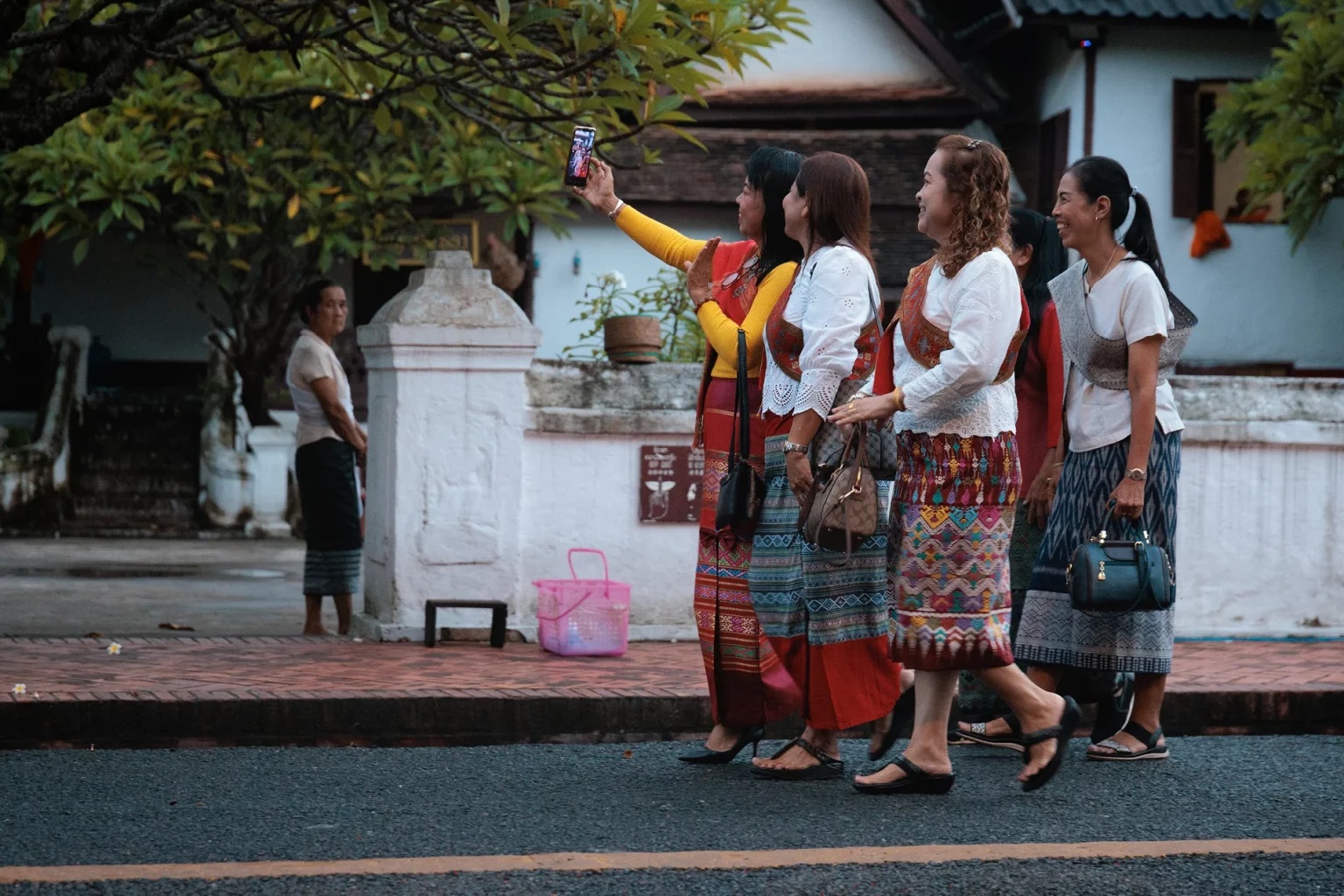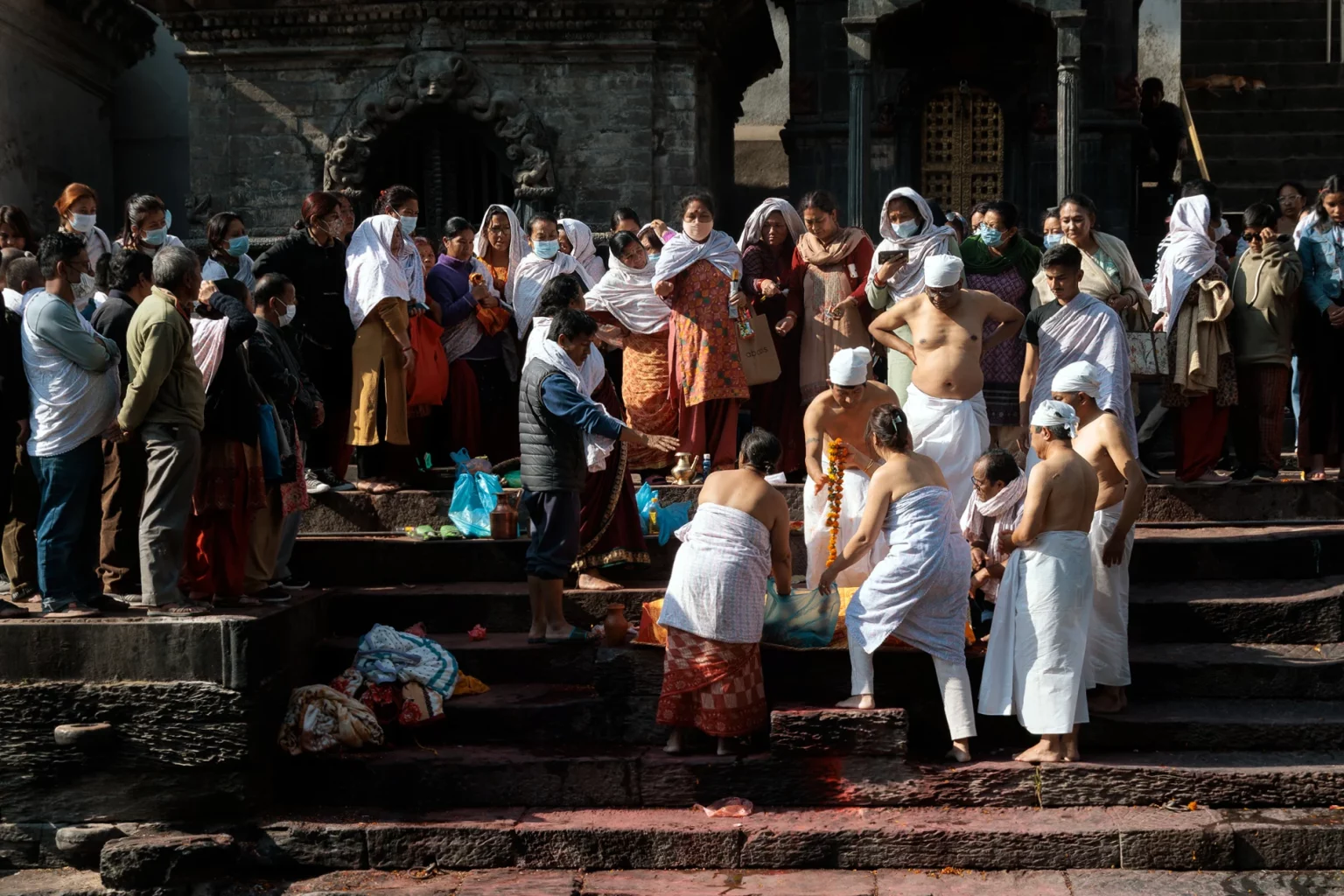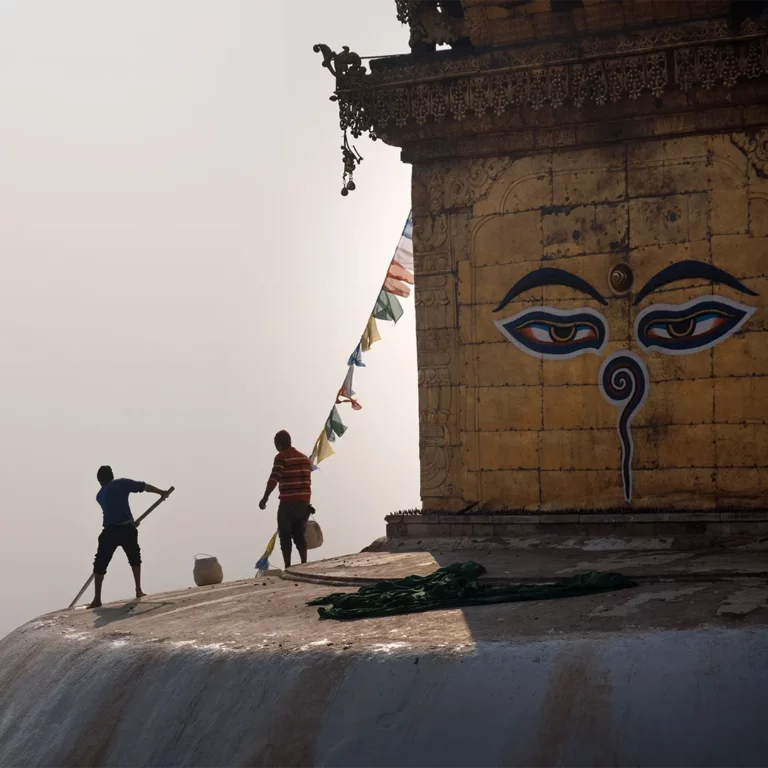Pashupati is one of the avatars of Shiva. It translates literally as “Lord of Life”, “Lord of Animals”, “Lord of Beasts” or “the Lord of all Beings”. While Shiva is often known as the destroyer, this incarnation seems to be a protector of everything that was, is, or ever will be alive.
This article serves as part two in our series on Pashupatinath. The previous one, titled “Should You Visit Pashupatinath,” offers a comprehensive exploration of its history and legends, providing you with useful insights on what to expect from your visit. In this piece I walk you through a personal reflection on the human condition as experienced during my visit to the vast temple complex—an introspective journey on humanity itself.
“When you visit Pashupatinath, you need to understand that it is not just a place to revere, but one to be experienced and used.”
Sadhguru
Sadhus
In the sacred realm of Pashupatinath, the convergence of devotees and sadhus creates an aether of spiritual energy, an ineffable blend of faith and devotion. Each of these holy men has a unique story, a personal spiritual journey of renunciation. Through their esoteric practice, the shaivite mystics are the living embodiments of the profound and colourful spiritual traditions ingrained in Indian and Nepali culture. This tradition expresses itself through the many mesmerising rituals of Pashupatinath, celebrated and carried on for centuries.
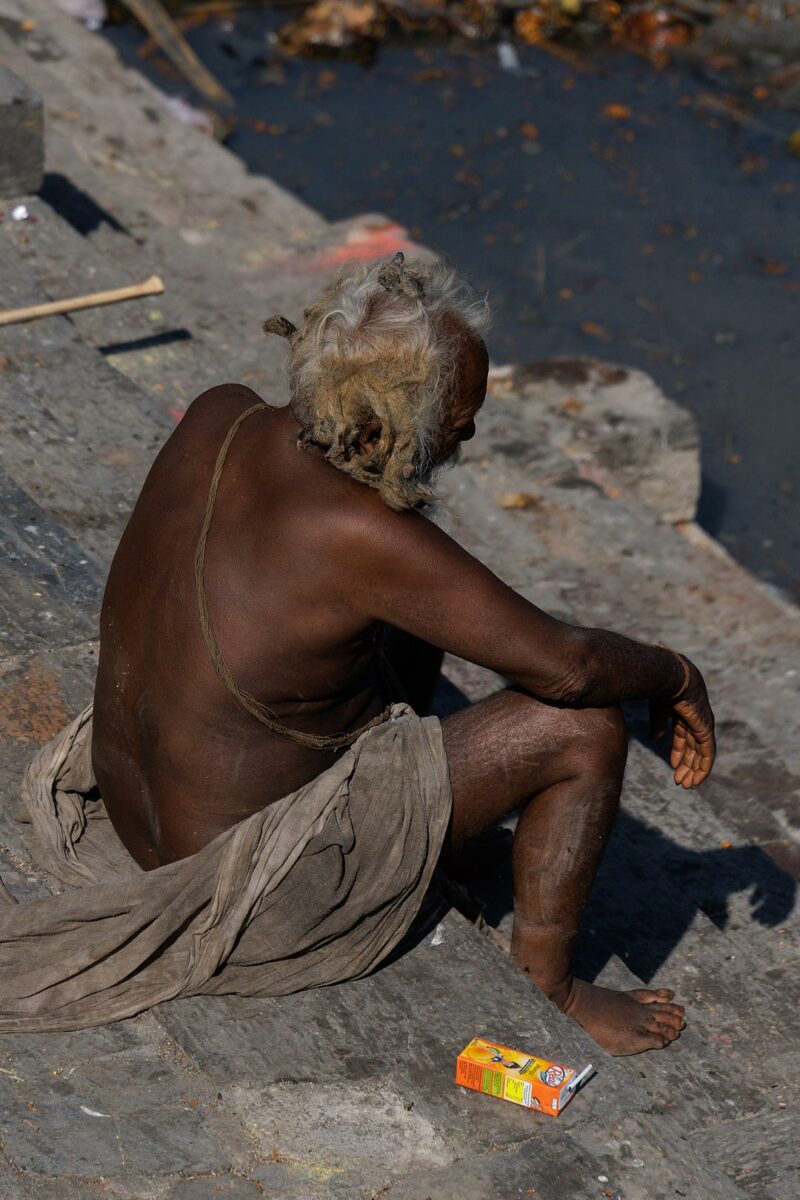
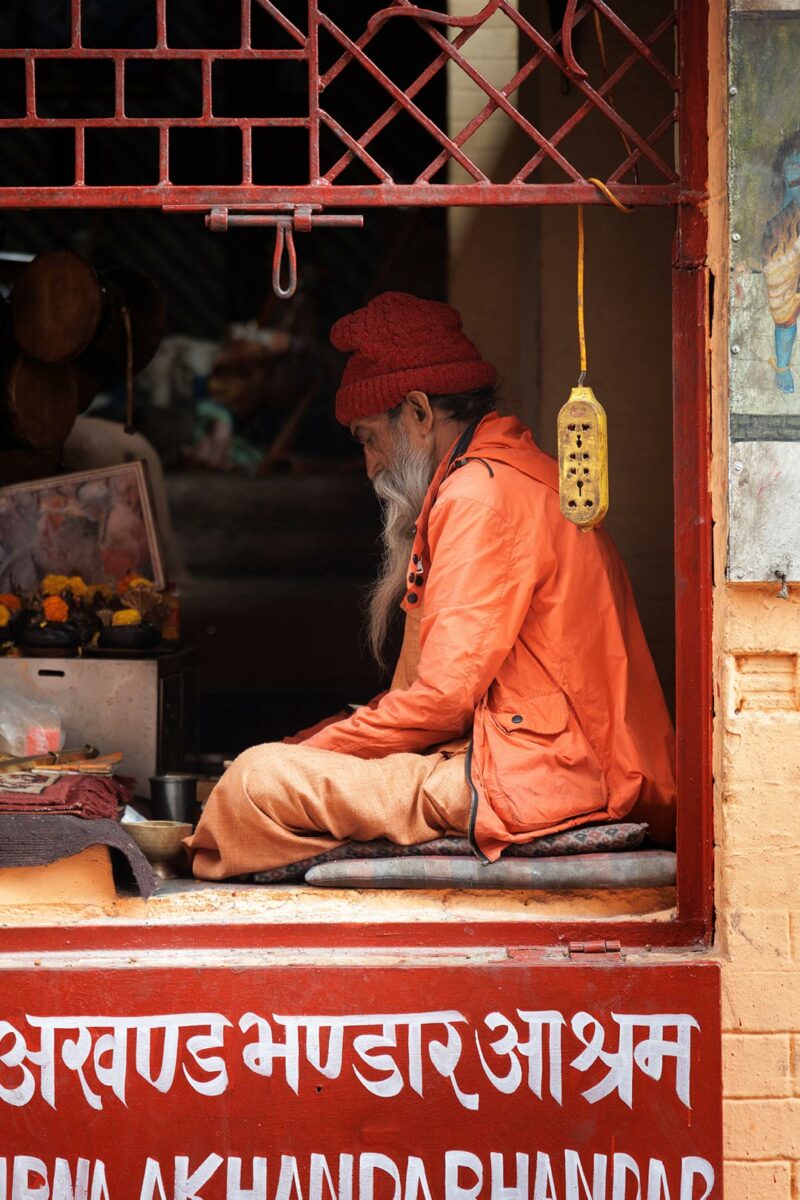
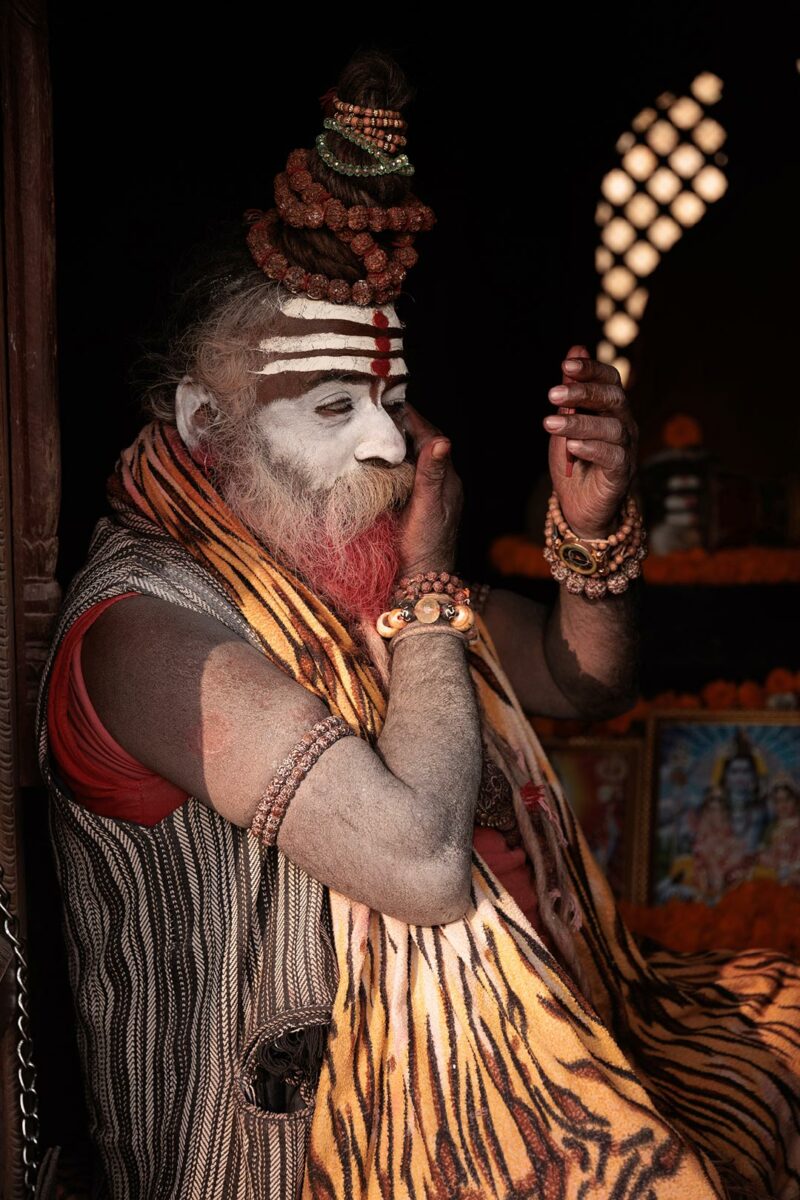
As a photographer I was of course attracted by the unique look of these enigmatic mystics. I approached some of them and quickly realised that it was hard to find the correct angle to photograph the lives of these ascetics. This raised the ethical question: “Do tourists disturb their spiritual practice? Do they interfere with the Pashupatinath rituals? ”
In ancient Vedic wisdom, Sadhus offered blessings, performed rituals, and engaged in philosophical discussions with pilgrims and curious visitors, sometimes in exchange for food or offerings.
The constant solicitation for photography seemed to have introduced an element of desire for fame and recognition to their quest for spiritual enlightenment.
As I tried to talk with several of them, the conversations rapidly shifted towards the one dollar it would cost to take a photo. On that day, I didn’t bring any money and decided to ponder on the question.
A Personal Journey
On my second visit, I decided to take some photos, happy to immortalise their colourful makeup. I accepted my place in their life. I learned not to judge this moment as either positive or negative, but as a part of the transformation and modernisation of the world. Like everyone in this world built on desire and fabricated needs, “the ones who have no wishes” have adapted. This made me realise that, amid constant globalisation, we often find ourselves casted further away from any origin stories.




It is possible that with a tad more persistence, time and courage, I would have found a place to sit and share a longer conversation, perhaps even gaining some wisdom from an ash-covered mystic. And maybe ,just maybe, learn about Shiva’s teachings on how to break free from the cycle of birth and death… A part of me tells me that this will happen one day in my life. This was not the moment yet!
⚠️ Trigger warning: Please be advised that the following photos depict cremations within a sacred temple, some might contain nudity, dead bodies, burning bodies. While they aim to celebrate and broaden our understanding of human traditions, some readers may find them visually intense. If you are sensitive to these subjects we invite you to move forward with caution or to skip to another article!
Antyeshti rituals at Pashupatinath Temple
The Temple stands as a sacred site where religious rituals and practices hold immense significance, particularly in relation to the sacred act of cremation. The fact that the temple is on the banks of the holy Bagmati River plays a pivotal role in the cremation rite. It’s one of the rituals of Pashupatinath, which are deeply rooted in religious and spiritual beliefs. One of them is the final sacrament or Antyeshti where families come to offer their loved one last bath!
The Bagmati river
In Hinduism, the Bagmati River is revered as a place of profound holiness, likely due to its direct linkage with the Gange. Numerous temples border the river, with Pashupatinath being the most important one. The river’s water is used to wash the body thrice before cremation, as it is believed to cleanse the soul of the departed . This ritual signifies purification of the deceased, priming them for their voyage towards salvation.
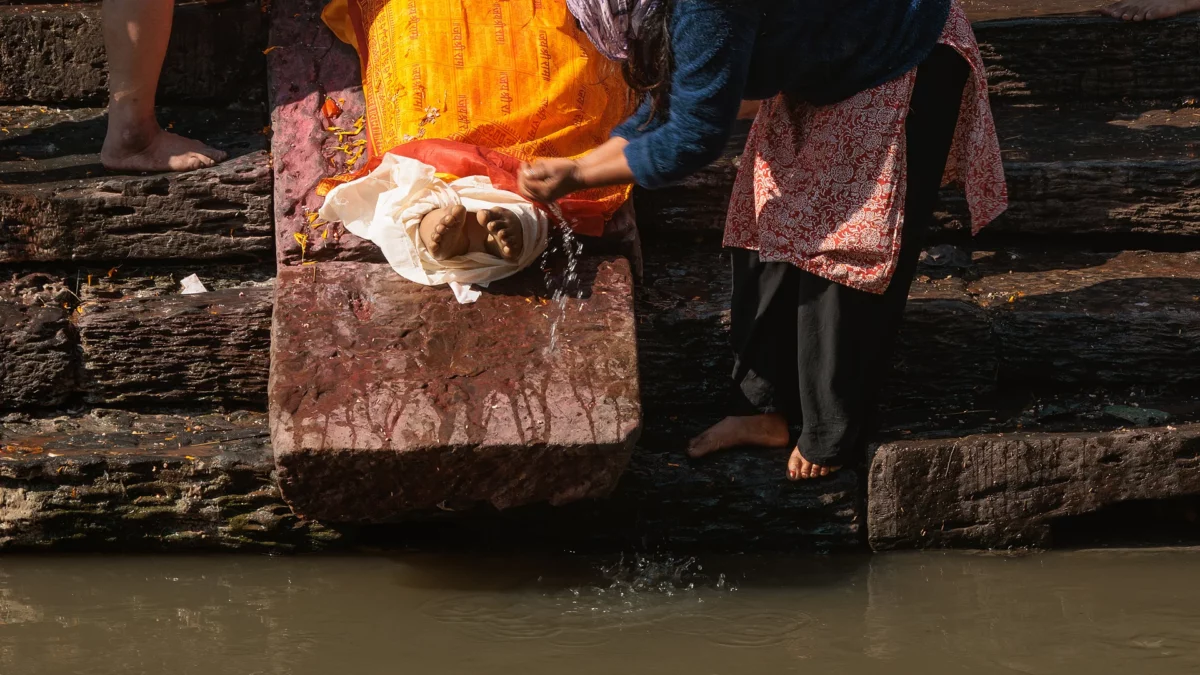
But the significance of the Bagmati River extends beyond the physical act of cleansing. Legends tells that the river’s water has the potential to guide departed souls towards eternal freedom. This lore amplifies the spiritual importance of the river in Pashupatinath Temple’s cremation rituals.
The triber without a name
I watched the ritual for hours, following a family who was caring for an old woman. I called her the triber without a name. Perched on the other side of the river, I was looking at them repeating movements that humanity has performed for thousands of years.
Would I be capable of doing the same? I observe them carefully, through every movement, like I was one of their own. And in a broader sense, we all were. There was something beautiful and touching about the realisation that we are all one family. We are all experiencing the same, going through a cycle of life and death! I felt invited to follow them to the Shmashana, the burning ground. Watching one of the sons start the fire in the mouth of his mom was a very powerful experience. Later I learned that it was to open her chakra and to balance the elements.
The simplicity, proximity, and duration of the ritual equally mesmerised me.





Three hours later, I watched them broom the entire pile of ashes into the river like the body never existed! Through the whole process I noticed the absence of tears. Just an acceptance that this body has finished performing its last śavāsana. Now the spirit can get ready for another life!
Life is a near death experience
From the moment we take our first breath, we embark on a journey. On this quest, every step we take carries an inherent risk. Our existence is marked by constant encounters with vulnerability and uncertainty. We navigate through the labyrinth of existence. We face challenges, embrace triumphs, and endure failures, all the while aware of the fragility of our mortality.
I left Nepal changed, and I owe this mainly to my visits to Pashupatinath and its rituals. From the colourful Sadhus, to the family washing and preparing the bodies of the one they once loved dearly.
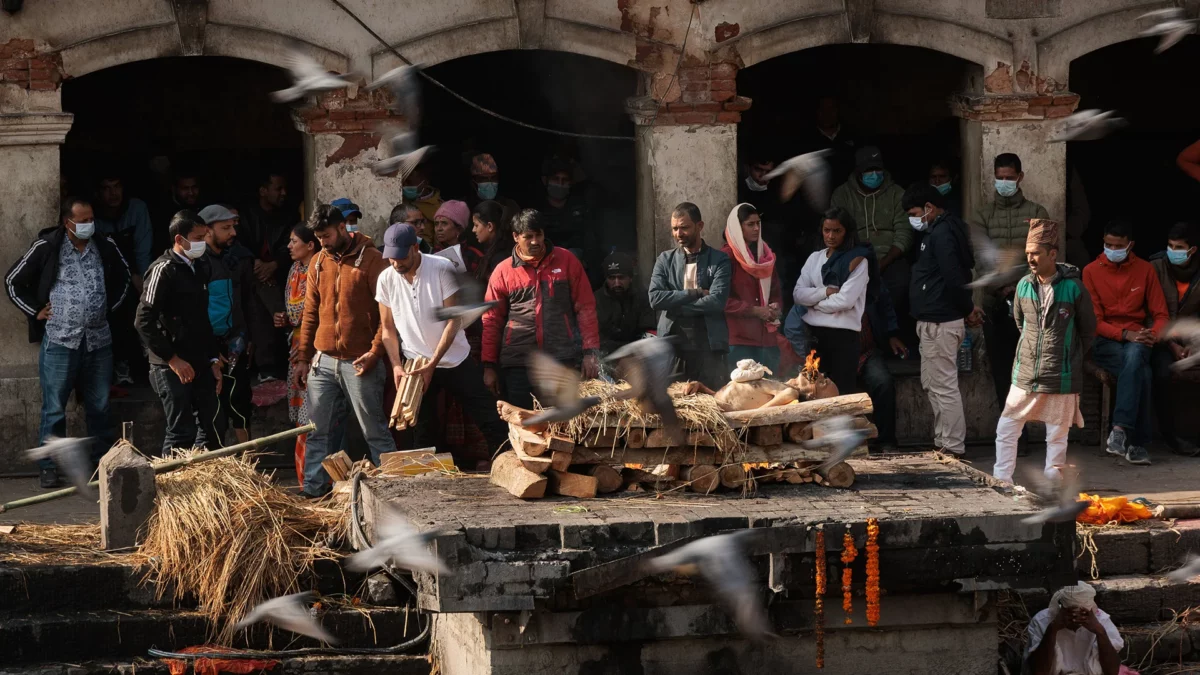
I realised that it is within the confines of this fragility that life’s true beauty unfolds. The awareness of our mortality sharpens our senses, ignites our passions, and fuels our pursuit of meaning. It drives us to seek connections with others or to leave indelible imprints on the world, and to savour every breath as a precious gift. No one knows for sure what is behind the next door, making it a compelling reason to live this mortal life peacefully and respectfully before we can take our last śavāsana.
If you enjoy this article please pin it!
